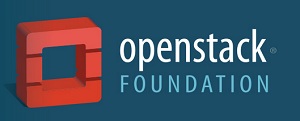Comcast’s X1 Takes a Crack at OpenStack

Looking to break away from the old, closed way of developing and delivering apps for set-top boxes, Comcast’s IP-capable X1 platform is being built on OpenStack, an open-source cloud operating system founded by Rackspace and NASA.
As a keynoter at this month's OpenStack Summit in Portland, Ore., Mark Muehl, Comcast's SVP of product engineering for the MSO's National Engineering Technical Operations unit, outlined the strategy and explained how the MSO is implementing an OpenStack-based private cloud with Cisco Systems.
He said Comcast started to investigate OpenStack about a year ago as the MSO sought a way to shift its video platform away from a vertically integrated, closed environment to one that is more open and able to accelerate the MSO's ability to create and integrate applications.
Muehl explained that under the old approach, Comcast would typically buy the set-top, some inter-media communication infrastructure and servers from the same company. Under that model, the majority of the intelligence of the service would reside in the set-top.
“We have very little visibility into how that system works,” he said of that old approach. “It takes us a long time to make changes on that platform.”
With X1, a service that relies on a private cloud made up of open source servers, software and standard IP technology, “we decided that we needed to try to change the paradigm,” he said.
Under this new paradigm, the communication of data from the set-top to Comcast’s network runs through Comcast’s OpenStack production cloud.
The smarter way to stay on top of the multichannel video marketplace. Sign up below.
And by moving most of the intelligence to the cloud, Comcast can more rapidly develop and deploy apps that were difficult if not impossible to offer via the legacy approach. As an example, he noted that Comcast was able to integrate a Rotten Tomatoes movie database app in about three weeks, explaining that it would have been impossible to accomplish it using the old model in part because set-tops don’t have enough memory to support all of that data. “Here [with X1] we can do it all in the cloud and just send the data back,” he said.
Muehl noted in a follow-up blog post that Comcast and Cisco intend to contribute much of their OpenStack work back to the OpenStack community.
Comcast’s X1 service features a media-rich cloud-based interface and an IP-based applications ecosystem. The next version, internally referred to as "X2," will add features such as personalized recommendations based on viewing habits and other data. The initial version of X1 runs on a Pace-made hybrid QAM/IP HD-DVR called the XG1 that can share content over a Multimedia over Coax Alliance (MoCA)-based home network with an HD client box called the RNG150N. Comcast is working with Arris and other vendors on a “headless” gateway called the XG5 that will work with an IP-only HD client device called the Xi3. The XG5 will also house a transcoder that converts QAM video into IP streams that can be shared with tablets, smartphones and other devices hanging off the home network. All of those products run on the Comcast Reference Design Kit (RDK), a pre-integrated software bundle for gateways and set-tops.
Comcast is aiming X1 primarily at new triple-play subscribers. Comcast launched X1 in Boston in mid-2012, and has since introduced it in Colorado; Atlanta and Augusta, Ga.; Chattanooga, Tenn.; San Francisco; and the Philadelphia area. The MSO plans to launch X1 in all its major markets this year.
